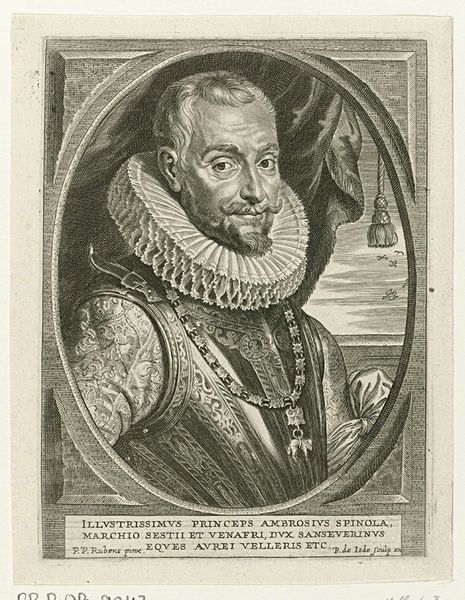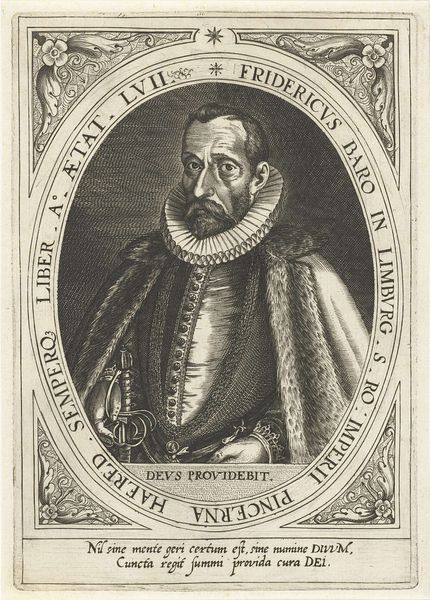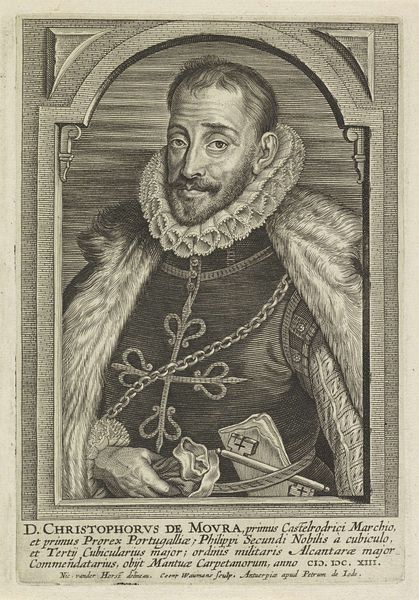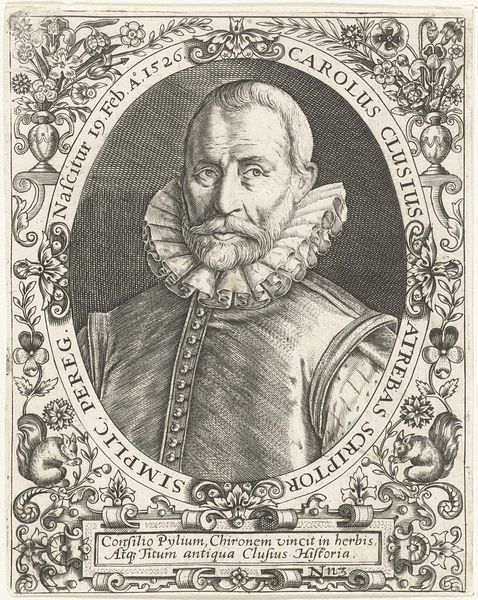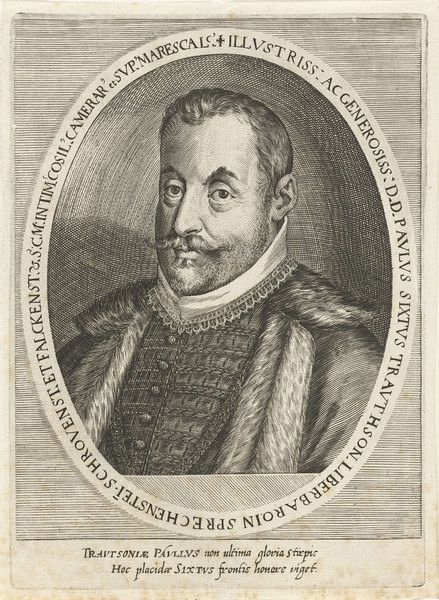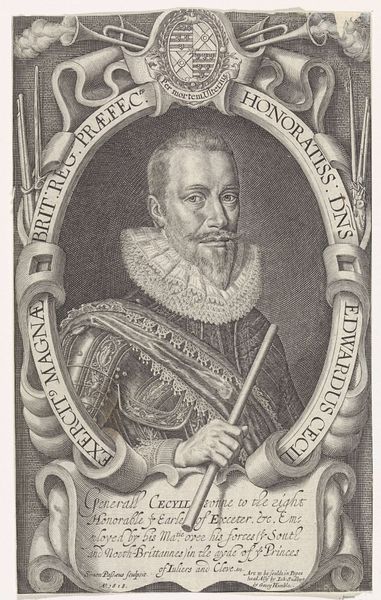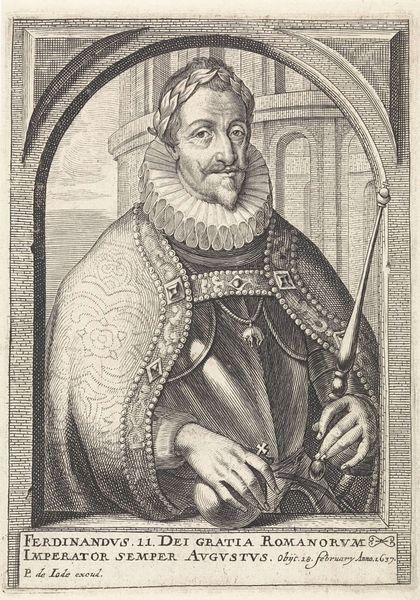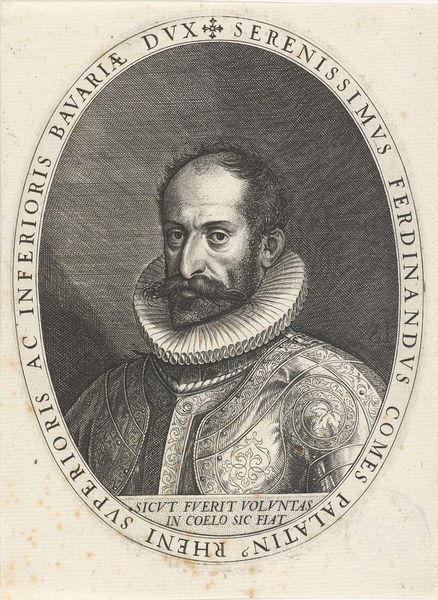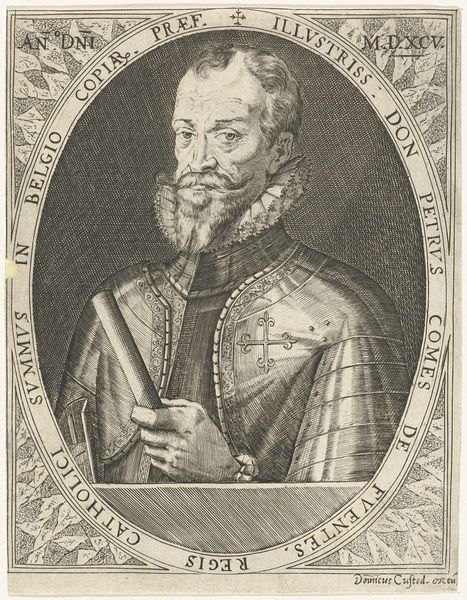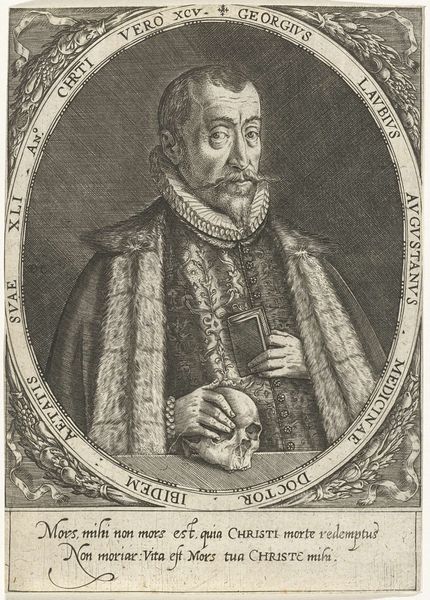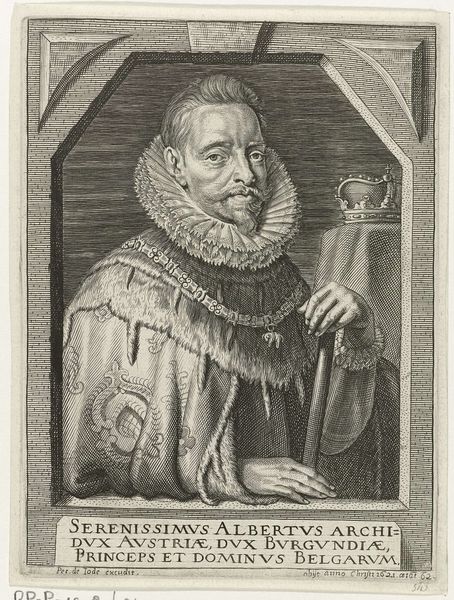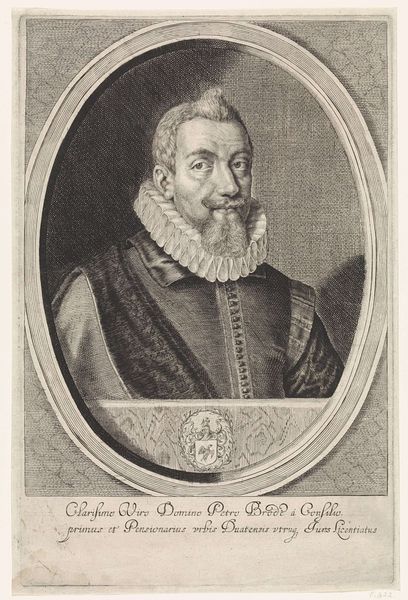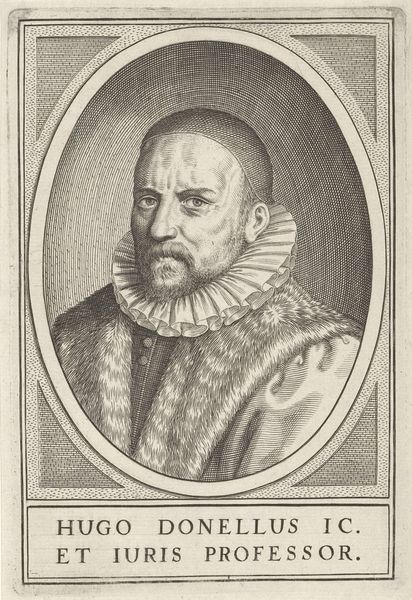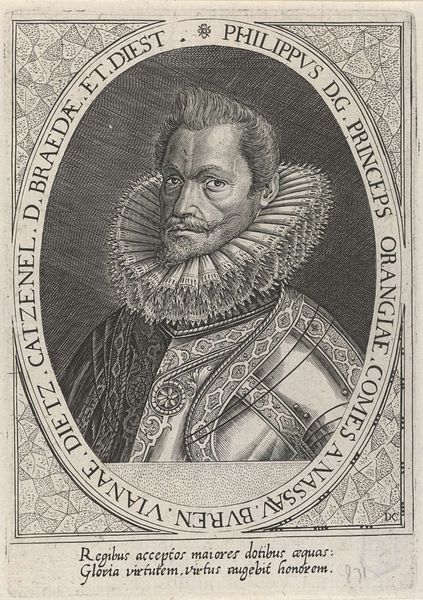
print, metal, engraving
#
portrait
#
baroque
# print
#
metal
#
old engraving style
#
history-painting
#
engraving
Dimensions: height 163 mm, width 123 mm
Copyright: Rijks Museum: Open Domain
Curator: Here we have "Portret van Ernst van Oostenrijk," a work that's dated somewhere between 1628 and 1670, currently residing here at the Rijksmuseum, created by Pieter de (II) Jode. Editor: It feels undeniably stern, even a bit foreboding. The dark etching against the paper lends this portrait of Ernst an aura of unyielding authority. What grabs me immediately is the tight control evident in the rendering of textures. Curator: And consider the process itself. Engraving on metal to create a print is demanding labor. The production of multiple prints also served to democratize his image somewhat. Metal as a material also carries its own connotations of industry and enduring record. The very fact of using this method makes Ernst's likeness more than a precious commodity; it is a propaganda object produced by and consumed by the masses. Editor: Precisely! And Ernst grasps a sword, pointing upwards, but there's something quite symbolic. He is Archduke of Austria, Duke of Burgundy…each object tells us about his titles, what he is known for and it helps reinforce his image as governor. What I see here goes far beyond representing his physical features. It's about constructing his persona through objects of power. The sword symbolizes authority, justice, and readiness to defend his domain. Curator: Let’s not overlook the elaborate collar or the inscription giving the full listing of his titles. Every element of the composition underscores status, title, office… He’s armored as if prepared for war, so the implication here would be preparedness in both civic duties and possible military ones. Editor: Also note how the window behind him has the feeling of unfinished construction… which, in a sense, suggests that the making of this man continues through the symbolism chosen by his maker. Curator: Agreed, and in that construction we cannot overlook the socio-economic factors influencing this choice of printing production or medium. Its implications shape a very different relationship of access and consumption. Editor: I see how the act of image production intertwines so compellingly with messages of control, memory, and meaning. Curator: Examining the means through which these historical portraits were constructed shows us how much artistry intersects with both societal production and perception.
Comments
No comments
Be the first to comment and join the conversation on the ultimate creative platform.
